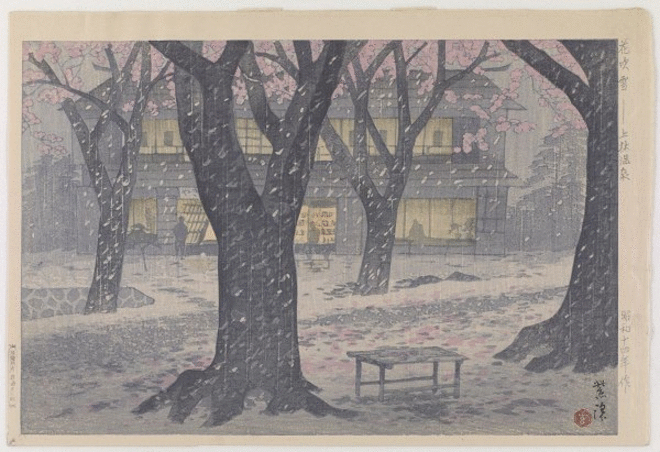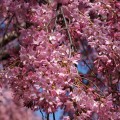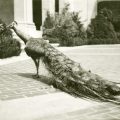
Kasamatsu Shiro, 1898–1991, woodblock print; ink and color on paper; Robert O. Muller Collection; Freer Gallery of Art and Arthur M. Sackler Gallery
As a symbol of friendship, Japan gave cherry trees to Washington, D.C., where they encircle the Tidal Basin. Not far away are the Smithsonian’s Asian art museums, the Freer Gallery of Art and the Arthur M. Sackler Gallery. They hold many Japanese artworks that feature cherry blossoms, which Japanese poets have long associated with the transience and shortness of life.
Above is “Cherry Blossom Flurry at Kambayashi Hot Spring” from the Sackler Gallery. To view similar artworks from the Freer and Sackler, go to Open F│S and search “cherry blossoms.”
James T. Ulak, senior curator of Japanese art at the Freer and Sackler, has written about their timeless appeal and deep-rooted symbolism in the book Cherry Blossoms, also featuring Howard S. Kaplan, museum writer. The book explores the significance of cherry blossoms in Japanese art and includes an introduction by Julian Raby, the Dame Jillian Sackler Director of the Arthur M. Sackler Gallery and the Freer Gallery of Art.
As part of the 2015 National Cherry Blossom Festival celebrations, thundering taiko drumming will meet traditional Japanese dance in a special performance by the Tamagawa University Taiko Drumming and Dance Troupe. The troupe will perform Thursday, April 9, at noon in front of the Freer. More information about the event is here.





